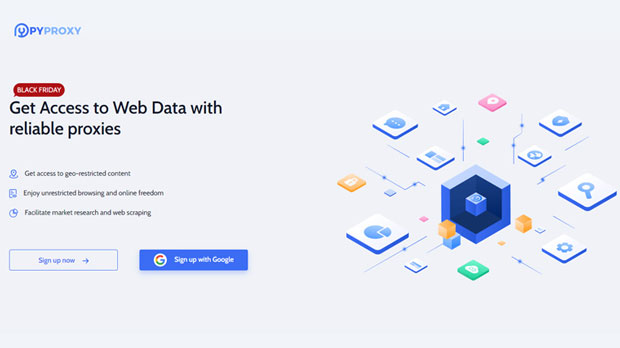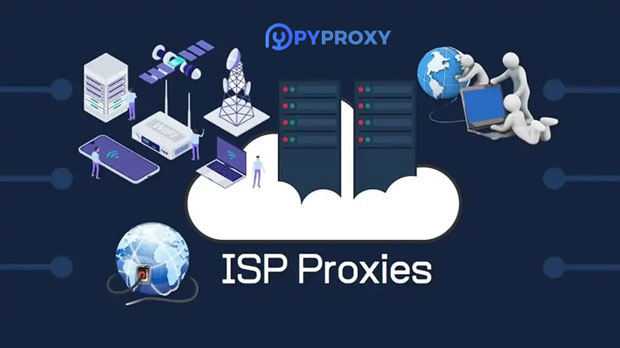How does the HTTP proxy work differently from the SOCKS5 proxy?
When navigating the world of online privacy and security, proxies serve as crucial tools for directing traffic between users and the internet. Among the different types of proxies, HTTP proxies and socks5 proxies are widely used, each with unique features and functionalities. While both act as intermediaries between the client and the internet, their underlying working principles and use cases vary significantly. This article will compare and analyze the working mechanisms of HTTP proxies and SOCKS5 proxies, highlighting their differences and helping users make informed decisions based on their specific needs. Understanding HTTP ProxyHTTP proxies are a type of proxy server designed to handle web traffic specifically through the Hypertext Transfer Protocol (HTTP). When a client requests a web page, the HTTP proxy acts as an intermediary, forwarding the request to the destination server on behalf of the client. In essence, an HTTP proxy operates at the application layer of the OSI model, focusing solely on HTTP traffic.The key function of an HTTP proxy is to intercept HTTP requests and responses. Once the client sends an HTTP request to access a web page, the proxy server forwards this request to the destination server. After the server responds, the proxy then sends the response back to the client. This allows the proxy to control, monitor, or filter the web traffic based on predefined rules.Some primary features of HTTP proxies include:1. Content Filtering: HTTP proxies can block access to certain websites or content types, often used in corporate or educational settings.2. Caching: Frequently accessed web pages can be stored locally on the proxy server, allowing faster access for future requests.3. IP Masking: By routing the client’s web traffic through its own IP address, an HTTP proxy can conceal the client’s original IP, enhancing privacy.However, HTTP proxies are limited in that they only support HTTP and HTTPS traffic. They cannot handle non-web-based traffic, such as FTP or P2P applications, which restricts their usage in diverse network environments.Exploring socks5 proxySOCKS5 is an advanced version of the SOCKS (Socket Secure) protocol, which allows for a broader range of internet traffic to be relayed through a proxy server. Unlike HTTP proxies, which are limited to handling HTTP and HTTPS traffic, SOCKS5 proxies can support virtually all internet protocols. This includes protocols for web traffic (HTTP/HTTPS), but also FTP, POP3, SMTP, and even peer-to-peer (P2P) protocols.SOCKS5 operates at a lower level, closer to the transport layer of the OSI model, which gives it the ability to handle more diverse types of network traffic. When a client sends a request through a SOCKS5 proxy, the proxy forwards the request to the appropriate server without modifying the data. This makes SOCKS5 more versatile and less prone to errors when dealing with non-HTTP traffic.Key features of SOCKS5 proxies include:1. Protocol Support: SOCKS5 supports a wide range of protocols beyond just HTTP/HTTPS, making it ideal for various network applications.2. Authentication: SOCKS5 can provide authentication mechanisms, ensuring that only authorized users can access the proxy server.3. Better Security and Privacy: SOCKS5 doesn’t modify the data passing through it, making it a more secure choice for users who need to maintain data integrity.4. IP Masking: Similar to HTTP proxies, SOCKS5 can also mask the client’s IP address, ensuring a higher degree of anonymity.Due to its versatility, SOCKS5 is ideal for scenarios requiring support for multiple protocols or users who need to bypass strict content filters.Key Differences Between HTTP Proxy and SOCKS5 ProxyWhile both HTTP proxies and SOCKS5 proxies serve as intermediaries between the client and the internet, they differ in several important areas.1. Protocol Support: - HTTP Proxy: Only supports HTTP and HTTPS traffic, which means it is tailored for browsing the web. - SOCKS5 Proxy: Supports a wide array of internet protocols, including HTTP, HTTPS, FTP, POP3, and even P2P traffic. This makes it a more flexible choice for a variety of network services.2. Performance and Efficiency: - HTTP Proxy: Can offer better performance for web browsing as it specializes in HTTP traffic. It also features caching, which can further speed up loading times for frequently accessed web pages. - SOCKS5 Proxy: Since SOCKS5 doesn’t perform deep inspection or modification of data packets, it generally provides better overall performance for a wider variety of internet protocols.3. Security: - HTTP Proxy: While it can mask the user’s IP address, it’s more vulnerable to security threats because it works specifically with HTTP/HTTPS traffic and may not fully protect other types of internet activity. - SOCKS5 Proxy: Offers better security, as it does not alter the data being transmitted and supports advanced authentication mechanisms. This makes it more secure for users who need to protect sensitive data or bypass restrictive firewalls.4. Use Cases: - HTTP Proxy: Primarily used for web browsing, content filtering, and network optimization in environments such as corporate networks or educational institutions. It is also suitable for users who want to access geographically restricted websites. - SOCKS5 Proxy: Ideal for users who need support for a variety of network applications, including file transfers (FTP), online gaming, and torrenting. Its flexibility makes it suitable for more diverse use cases compared to HTTP proxies.When to Use HTTP Proxy vs. SOCKS5 ProxyChoosing between an HTTP proxy and a SOCKS5 proxy depends on the user's specific needs and the type of traffic they plan to handle.- HTTP Proxy: If the primary need is for web browsing, content filtering, or simple IP masking, an HTTP proxy is sufficient. For example, businesses or educational institutions might deploy HTTP proxies to restrict access to certain websites or improve internet speed via caching.- SOCKS5 Proxy: For users who require support for a broader range of network protocols, such as FTP transfers, online gaming, or peer-to-peer (P2P) file sharing, a SOCKS5 proxy is the better choice. Its ability to handle multiple protocols makes it more adaptable to different internet activities.ConclusionIn summary, both HTTP proxies and SOCKS5 proxies serve as valuable tools in the digital landscape, each with its own strengths and weaknesses. HTTP proxies excel at handling web traffic, offering simplicity and performance optimization for web browsing. However, they are limited in their protocol support and are less versatile than SOCKS5 proxies. On the other hand, SOCKS5 proxies provide greater flexibility, supporting a wide range of internet protocols and ensuring more robust security and privacy features.For users who prioritize web browsing and content filtering, an HTTP proxy may be the ideal choice. For those who require a broader range of supported applications and enhanced security, a SOCKS5 proxy stands out as the more powerful and adaptable option. By understanding the differences between these two types of proxies, users can make informed decisions that best align with their online needs.
2025-01-03
























































